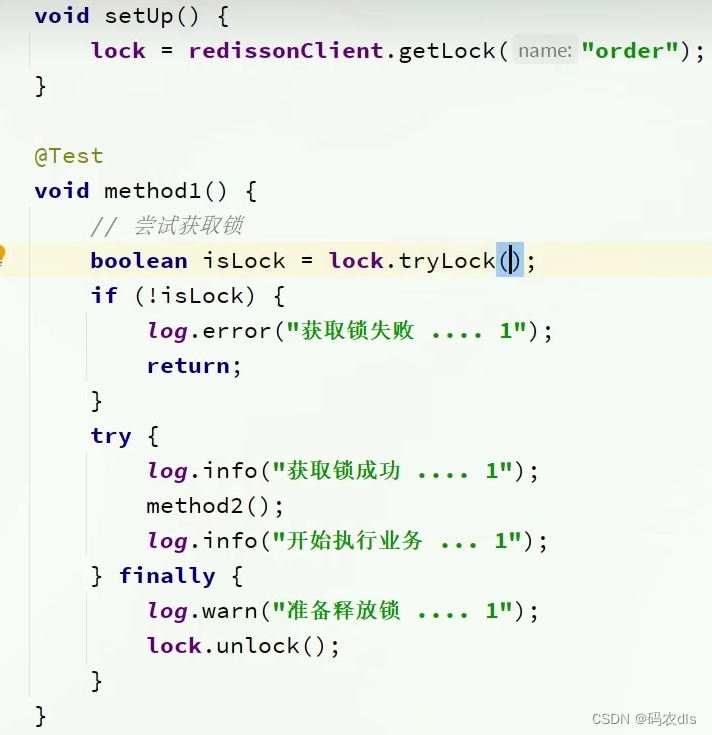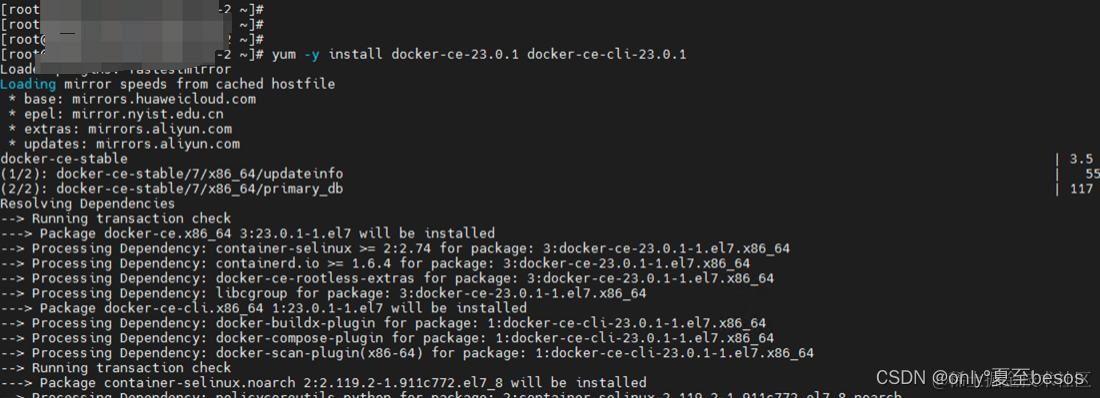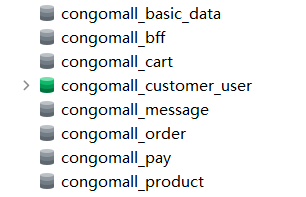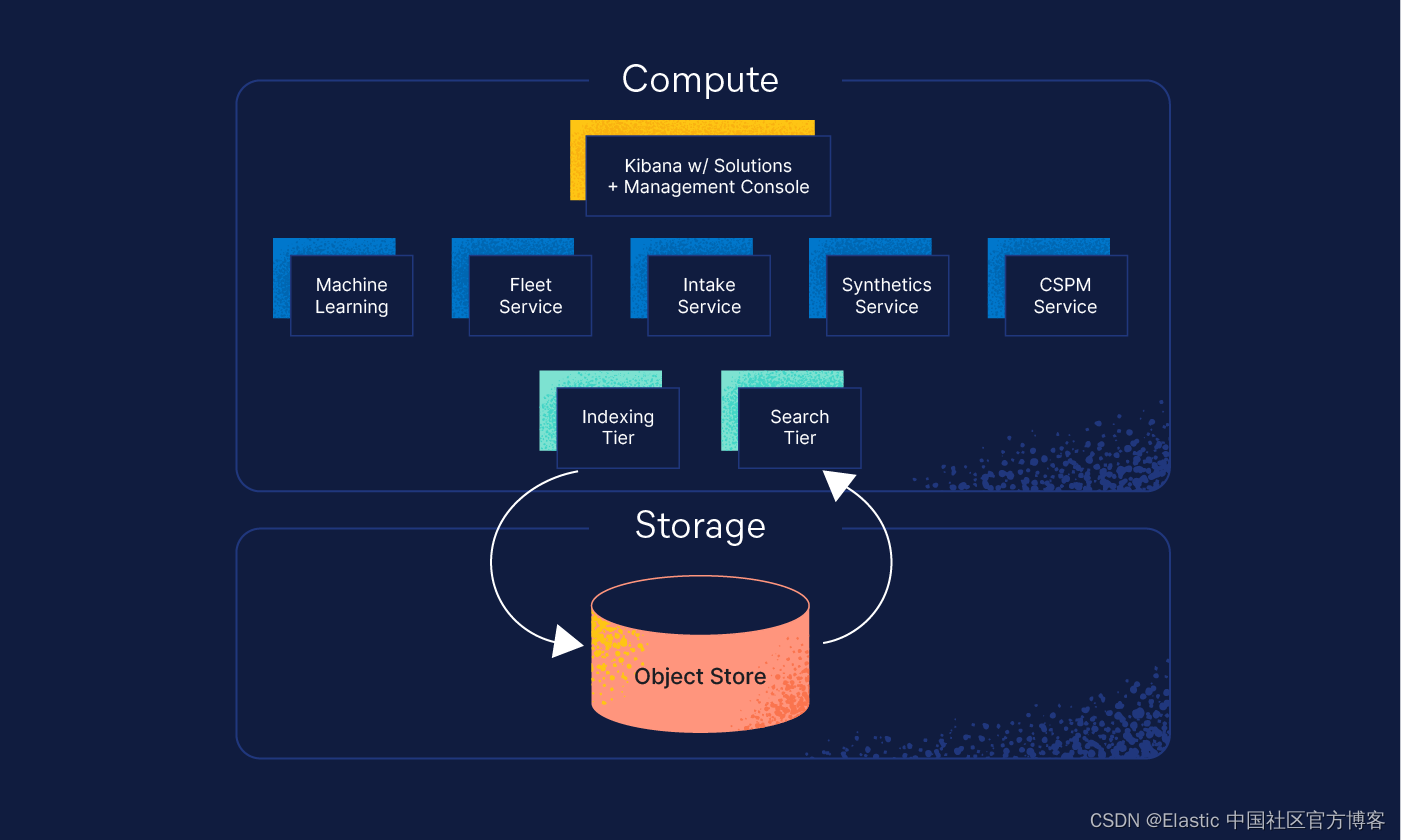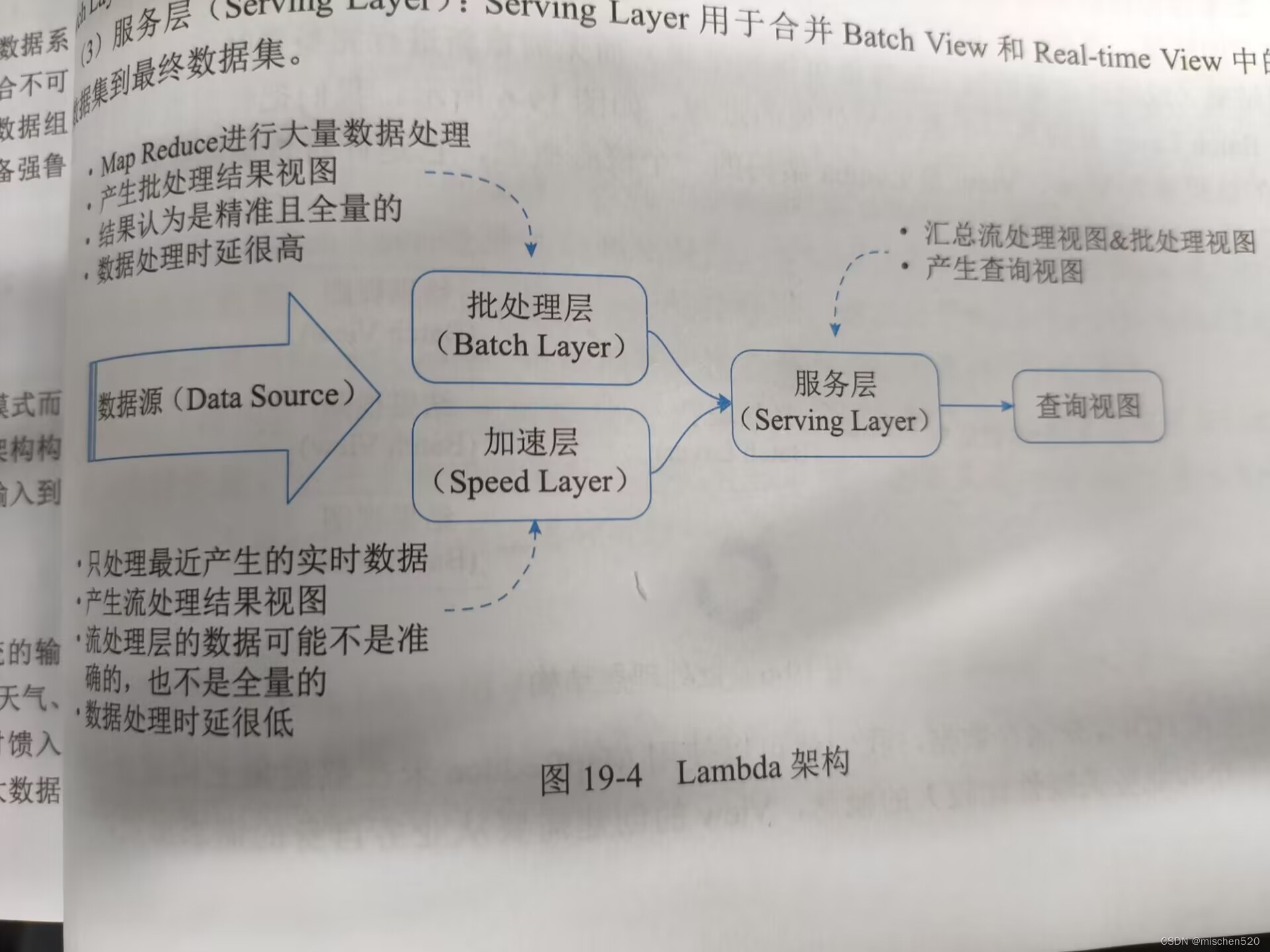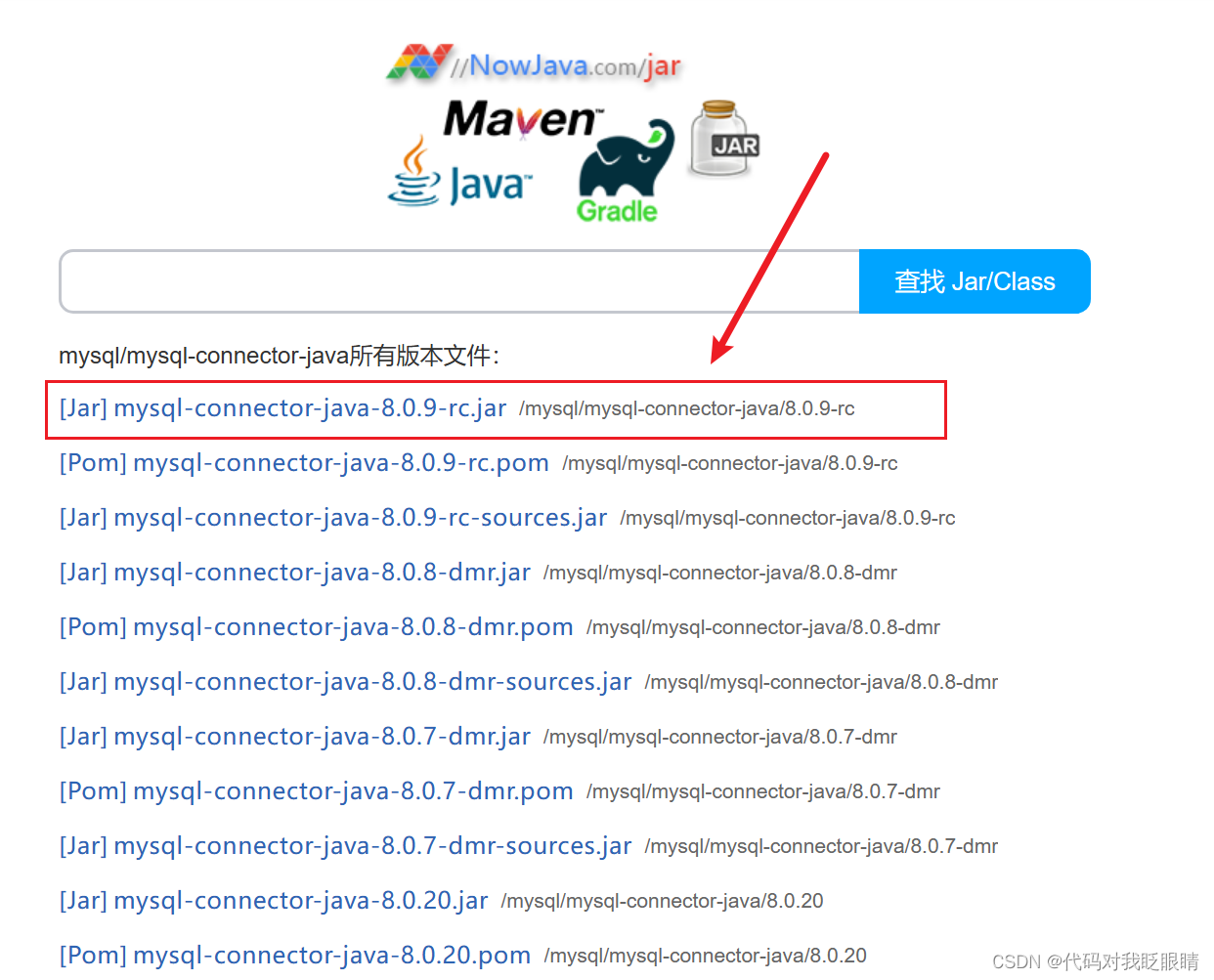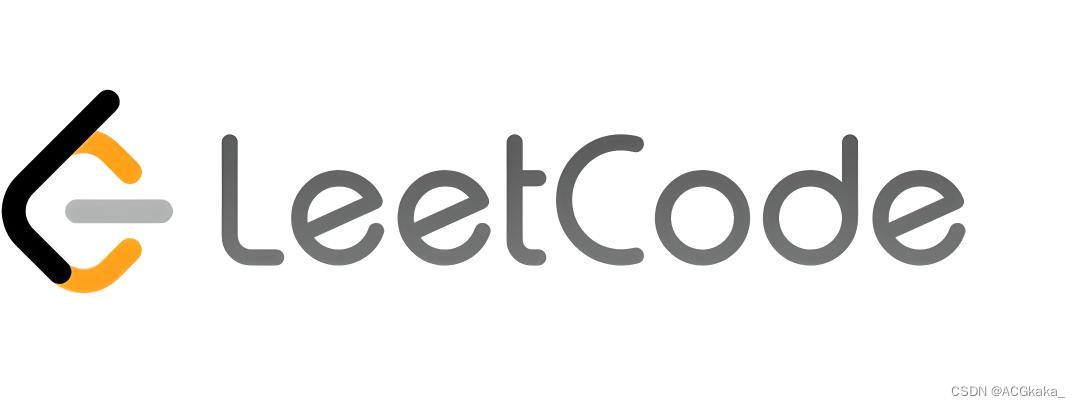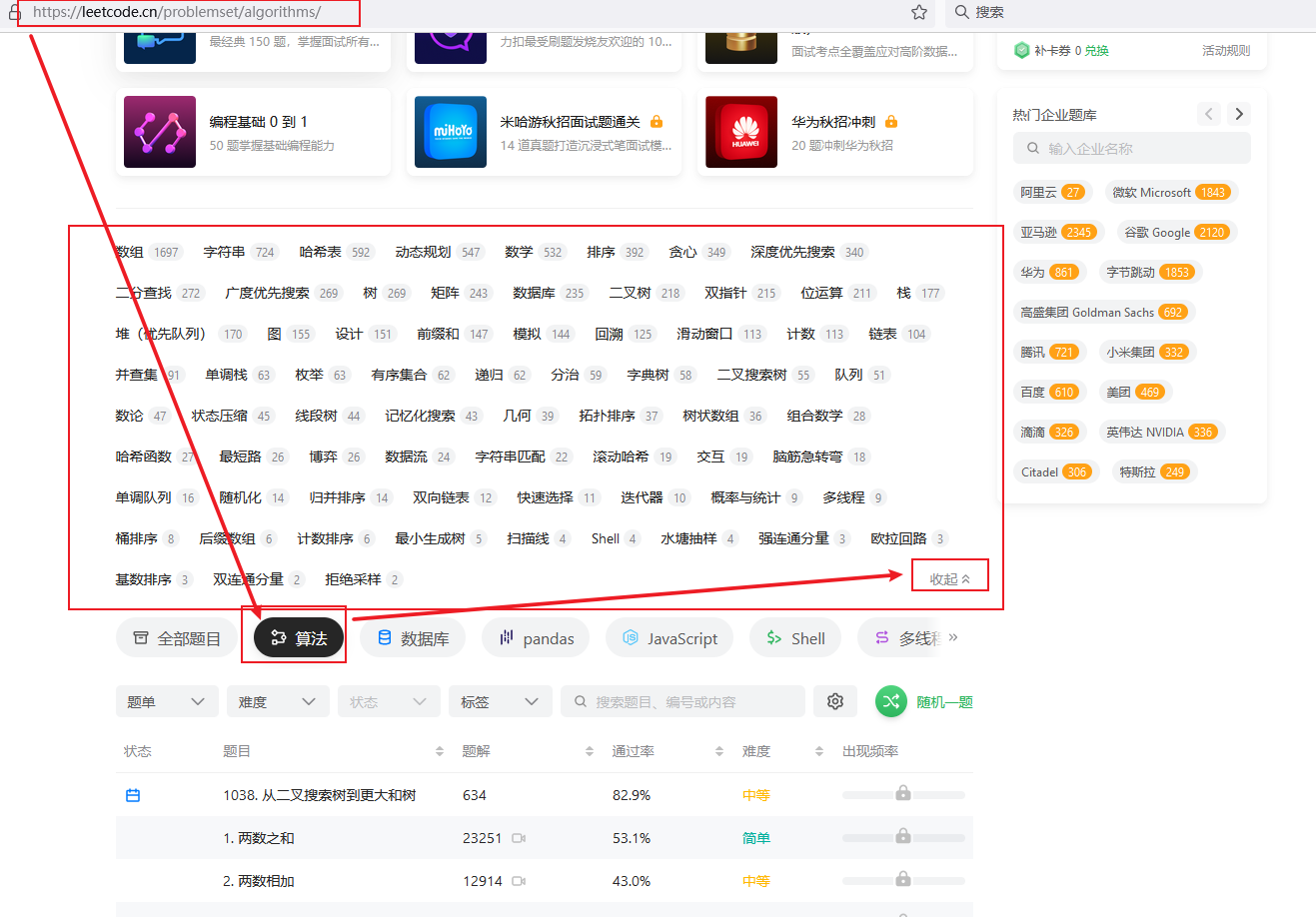慢品人间烟火色,闲观万事岁月长
一,基本使用
关于databinding的基本使用请看之前的文章
Android--Jetpack--Databinding详解-CSDN博客
二,xml布局解析
分析源码呢,主要就是从两方面入手,一个是使用,一个是APT生成的代码。
我们看一下上一篇文章我们的布局xml文件:
<?xml version="1.0" encoding="utf-8"?>
<layout xmlns:android="http://schemas.android.com/apk/res/android"
xmlns:app="http://schemas.android.com/apk/res-auto"
xmlns:tools="http://schemas.android.com/tools">
<data class="MyDataBing">
<import type="com.yuanzhen.lifecycledemo.databing.YuanZhen"/>
<variable
name="yuanzhen"
type="YuanZhen"/>
</data>
<RelativeLayout
android:layout_width="match_parent"
android:layout_height="match_parent"
tools:context=".MainActivity">
<TextView
android:id="@+id/txt_name"
android:layout_width="wrap_content"
android:layout_height="wrap_content"
android:text="@{yuanzhen.name}"
android:textSize="40sp"
app:layout_constraintBottom_toBottomOf="parent"
app:layout_constraintEnd_toEndOf="parent"
app:layout_constraintStart_toStartOf="parent"
app:layout_constraintTop_toTopOf="parent" />
<TextView
android:id="@+id/txt_age"
android:layout_width="wrap_content"
android:layout_height="wrap_content"
android:textSize="40sp"
android:text="@{String.valueOf(yuanzhen.age)}"
app:layout_constraintBottom_toBottomOf="parent"
app:layout_constraintEnd_toEndOf="parent"
app:layout_constraintStart_toStartOf="parent"
app:layout_constraintTop_toTopOf="parent"
android:layout_below="@+id/txt_name"/>
<EditText
android:layout_width="wrap_content"
android:layout_height="wrap_content"
android:layout_below="@+id/txt_age"
android:textSize="40sp"
android:text="@={yuanzhen.name}"/>
</RelativeLayout>
</layout>然后我们看一下APT生成的代码:
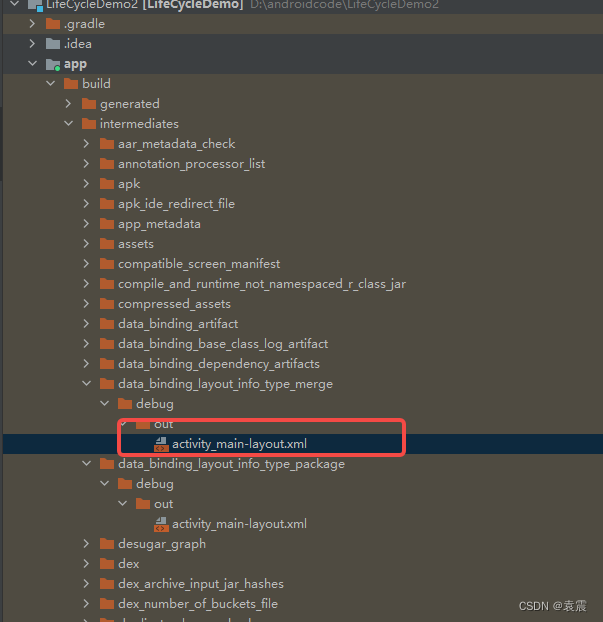
打开之后,格式化一下,看看代码:
<?xml version="1.0" encoding="utf-8" standalone="yes"?>
<Layout bindingClass="MyDataBing" directory="layout"
filePath="app\src\main\res\layout\activity_main.xml" isBindingData="true"
isMerge="false" layout="activity_main" modulePackage="com.yuanzhen.lifecycledemo"
rootNodeType="android.widget.RelativeLayout">
<ClassNameLocation endLine="5" endOffset="26" startLine="5" startOffset="17" />
<Variables name="yuanzhen" declared="true" type="YuanZhen">
<location endLine="9" endOffset="28" startLine="7" startOffset="8" />
</Variables>
<Imports name="YuanZhen" type="com.yuanzhen.lifecycledemo.databing.YuanZhen">
<location endLine="6" endOffset="68" startLine="6" startOffset="8" />
</Imports>
<Targets>
<Target tag="layout/activity_main_0" view="RelativeLayout">
<Expressions />
<location endLine="48" endOffset="20" startLine="12" startOffset="4" />
</Target>
<Target id="@+id/txt_name" tag="binding_1" view="TextView">
<Expressions>
<Expression attribute="android:text" text="yuanzhen.name">
<Location endLine="21" endOffset="42" startLine="21" startOffset="12" />
<TwoWay>false</TwoWay>
<ValueLocation endLine="21" endOffset="40" startLine="21" startOffset="28" />
</Expression>
</Expressions>
<location endLine="26" endOffset="55" startLine="17" startOffset="8" />
</Target>
<Target id="@+id/txt_age" tag="binding_2" view="TextView">
<Expressions>
<Expression attribute="android:text" text="String.valueOf(yuanzhen.age)">
<Location endLine="33" endOffset="57" startLine="33" startOffset="12" />
<TwoWay>false</TwoWay>
<ValueLocation endLine="33" endOffset="55" startLine="33" startOffset="28" />
</Expression>
</Expressions>
<location endLine="38" endOffset="49" startLine="28" startOffset="8" />
</Target>
<Target tag="binding_3" view="EditText">
<Expressions>
<Expression attribute="android:text" text="yuanzhen.name">
<Location endLine="44" endOffset="43" startLine="44" startOffset="12" />
<TwoWay>true</TwoWay>
<ValueLocation endLine="44" endOffset="41" startLine="44" startOffset="29" />
</Expression>
</Expressions>
<location endLine="44" endOffset="45" startLine="39" startOffset="8" />
</Target>
</Targets>
</Layout>我们发现每个view都包装了一个Targets标签,对应了一个tag。
比如RelativeLayout对应的是layout/activity_main_0
然后看看我们的textview:
<Target id="@+id/txt_name" tag="binding_1" view="TextView">
<Expressions>
<Expression attribute="android:text" text="yuanzhen.name">
<Location endLine="21" endOffset="42" startLine="21" startOffset="12" />
<TwoWay>false</TwoWay>
<ValueLocation endLine="21" endOffset="40" startLine="21" startOffset="28" />
</Expression>
</Expressions>
<location endLine="26" endOffset="55" startLine="17" startOffset="8" />
</Target>通过text将yuanzhen.name赋值给了textview
然后在打开另一个APT生成的文件:

看看它的代码:
<?xml version="1.0" encoding="utf-8"?>
<RelativeLayout
android:layout_width="match_parent"
android:layout_height="match_parent"
tools:context=".MainActivity" android:tag="layout/activity_main_0" xmlns:android="http://schemas.android.com/apk/res/android" xmlns:app="http://schemas.android.com/apk/res-auto" xmlns:tools="http://schemas.android.com/tools">
<TextView
android:id="@+id/txt_name"
android:layout_width="wrap_content"
android:layout_height="wrap_content"
android:tag="binding_1"
android:textSize="40sp"
app:layout_constraintBottom_toBottomOf="parent"
app:layout_constraintEnd_toEndOf="parent"
app:layout_constraintStart_toStartOf="parent"
app:layout_constraintTop_toTopOf="parent" />
<TextView
android:id="@+id/txt_age"
android:layout_width="wrap_content"
android:layout_height="wrap_content"
android:textSize="40sp"
android:tag="binding_2"
app:layout_constraintBottom_toBottomOf="parent"
app:layout_constraintEnd_toEndOf="parent"
app:layout_constraintStart_toStartOf="parent"
app:layout_constraintTop_toTopOf="parent"
android:layout_below="@+id/txt_name"/>
<EditText
android:layout_width="wrap_content"
android:layout_height="wrap_content"
android:layout_below="@+id/txt_age"
android:textSize="40sp"
android:tag="binding_3" />
</RelativeLayout>上面空了一大块,把布局文件的layout去掉了,其余的和我们的布局文件一样,除此之外,它给每个view都增加了一个tag,这个tag与上面的tag一一对应,这就是布局的解析。
三,xml代码解析
首先我们看一下上一章我们的使用代码:
public class MainActivity extends AppCompatActivity {
private MyDataBing dataBinding;
@Override
protected void onCreate(Bundle savedInstanceState) {
super.onCreate(savedInstanceState);
dataBinding = DataBindingUtil.setContentView(this, R.layout.activity_main);
YuanZhen yuanZhen =new YuanZhen("袁震",18);
dataBinding.setYuanzhen(yuanZhen);
new Thread(new Runnable() {
@Override
public void run() {
for (int i = 0; i < 10; i++) {
try {
Thread.sleep(1000);
yuanZhen.setName(yuanZhen.getName()+i);
yuanZhen.setAge(18+i);
} catch (InterruptedException e) {
e.printStackTrace();
}
}
}
}).start();
}
}首先,我们看一下dataBinding = DataBindingUtil.setContentView(this, R.layout.activity_main)这句代码的实现,它会走到DataBindingUtil的setContentView():
public static <T extends ViewDataBinding> T setContentView(@NonNull Activity activity,
int layoutId) {
return setContentView(activity, layoutId, sDefaultComponent);
}继续往里面看:
public static <T extends ViewDataBinding> T setContentView(@NonNull Activity activity,
int layoutId, @Nullable DataBindingComponent bindingComponent) {
activity.setContentView(layoutId);
View decorView = activity.getWindow().getDecorView();
ViewGroup contentView = (ViewGroup) decorView.findViewById(android.R.id.content);
return bindToAddedViews(bindingComponent, contentView, 0, layoutId);
}前三行代码我们应该都能看懂
获取到了conetntView,并传入了方法bindToAddedViews(bindingComponent, contentView, 0, layoutId)中,我们接着看该方法:
private static <T extends ViewDataBinding> T bindToAddedViews(DataBindingComponent component,
ViewGroup parent, int startChildren, int layoutId) {
final int endChildren = parent.getChildCount();
final int childrenAdded = endChildren - startChildren;
if (childrenAdded == 1) {
final View childView = parent.getChildAt(endChildren - 1);
return bind(component, childView, layoutId);
} else {
final View[] children = new View[childrenAdded];
for (int i = 0; i < childrenAdded; i++) {
children[i] = parent.getChildAt(i + startChildren);
}
return bind(component, children, layoutId);
}
}该方法会调用bind(component, children, layoutId)方法:
static <T extends ViewDataBinding> T bind(DataBindingComponent bindingComponent, View root,
int layoutId) {
return (T) sMapper.getDataBinder(bindingComponent, root, layoutId);
}然后会调用 sMapper.getDataBinder(bindingComponent, root, layoutId):
public abstract class DataBinderMapper {
public abstract ViewDataBinding getDataBinder(DataBindingComponent bindingComponent, View view,
int layoutId);
public abstract ViewDataBinding getDataBinder(DataBindingComponent bindingComponent,
View[] view, int layoutId);
public abstract int getLayoutId(String tag);
public abstract String convertBrIdToString(int id);
@NonNull
public List<DataBinderMapper> collectDependencies() {
// default implementation for backwards compatibility.
return Collections.emptyList();
}
}然后查看getDataBinder的引用,会找到APT生成的DataBinderMapperImpl类的getDataBinder方法:
public class DataBinderMapperImpl extends DataBinderMapper {
。。。
@Override
public ViewDataBinding getDataBinder(DataBindingComponent component, View view, int layoutId) {
int localizedLayoutId = INTERNAL_LAYOUT_ID_LOOKUP.get(layoutId);
if(localizedLayoutId > 0) {
final Object tag = view.getTag();
if(tag == null) {
throw new RuntimeException("view must have a tag");
}
switch(localizedLayoutId) {
case LAYOUT_ACTIVITYMAIN: {
if ("layout/activity_main_0".equals(tag)) {
return new MyDataBingImpl(component, view);
}
throw new IllegalArgumentException("The tag for activity_main is invalid. Received: " + tag);
}
}
}
return null;
}
。。。
}这里比较关键的代码是:如果我们传过来的tag是layout/activity_main_0,就是前面生成的xml里面的根节点的tag,那么就创建我们自定义命名的MyDataBingImpl。
然后我们查看MyDataBingImpl的构造函数:
public MyDataBingImpl(@Nullable androidx.databinding.DataBindingComponent bindingComponent, @NonNull View root) {
this(bindingComponent, root, mapBindings(bindingComponent, root, 4, sIncludes, sViewsWithIds));
}会发现这里有个4,4的意思就是xml文件里面的4个view节点。
继续往下看mapBindings源码:
protected static Object[] mapBindings(DataBindingComponent bindingComponent, View root,
int numBindings, IncludedLayouts includes, SparseIntArray viewsWithIds) {
Object[] bindings = new Object[numBindings];
mapBindings(bindingComponent, root, bindings, includes, viewsWithIds, true);
return bindings;
}创建了一个大小为4的对象数组,然后调用mapBindings:
private static void mapBindings(DataBindingComponent bindingComponent, View view,
Object[] bindings, IncludedLayouts includes, SparseIntArray viewsWithIds,
boolean isRoot) {
final int indexInIncludes;
final ViewDataBinding existingBinding = getBinding(view);
if (existingBinding != null) {
return;
}
Object objTag = view.getTag();
final String tag = (objTag instanceof String) ? (String) objTag : null;
boolean isBound = false;
if (isRoot && tag != null && tag.startsWith("layout")) {
final int underscoreIndex = tag.lastIndexOf('_');
if (underscoreIndex > 0 && isNumeric(tag, underscoreIndex + 1)) {
final int index = parseTagInt(tag, underscoreIndex + 1);
if (bindings[index] == null) {
bindings[index] = view;
}
indexInIncludes = includes == null ? -1 : index;
isBound = true;
} else {
indexInIncludes = -1;
}
} else if (tag != null && tag.startsWith(BINDING_TAG_PREFIX)) {
int tagIndex = parseTagInt(tag, BINDING_NUMBER_START);
if (bindings[tagIndex] == null) {
bindings[tagIndex] = view;
}
isBound = true;
indexInIncludes = includes == null ? -1 : tagIndex;
} else {
// Not a bound view
indexInIncludes = -1;
}
if (!isBound) {
final int id = view.getId();
if (id > 0) {
int index;
if (viewsWithIds != null && (index = viewsWithIds.get(id, -1)) >= 0 &&
bindings[index] == null) {
bindings[index] = view;
}
}
}
if (view instanceof ViewGroup) {
final ViewGroup viewGroup = (ViewGroup) view;
final int count = viewGroup.getChildCount();
int minInclude = 0;
for (int i = 0; i < count; i++) {
final View child = viewGroup.getChildAt(i);
boolean isInclude = false;
if (indexInIncludes >= 0 && child.getTag() instanceof String) {
String childTag = (String) child.getTag();
if (childTag.endsWith("_0") &&
childTag.startsWith("layout") && childTag.indexOf('/') > 0) {
// This *could* be an include. Test against the expected includes.
int includeIndex = findIncludeIndex(childTag, minInclude,
includes, indexInIncludes);
if (includeIndex >= 0) {
isInclude = true;
minInclude = includeIndex + 1;
final int index = includes.indexes[indexInIncludes][includeIndex];
final int layoutId = includes.layoutIds[indexInIncludes][includeIndex];
int lastMatchingIndex = findLastMatching(viewGroup, i);
if (lastMatchingIndex == i) {
bindings[index] = DataBindingUtil.bind(bindingComponent, child,
layoutId);
} else {
final int includeCount = lastMatchingIndex - i + 1;
final View[] included = new View[includeCount];
for (int j = 0; j < includeCount; j++) {
included[j] = viewGroup.getChildAt(i + j);
}
bindings[index] = DataBindingUtil.bind(bindingComponent, included,
layoutId);
i += includeCount - 1;
}
}
}
}
if (!isInclude) {
mapBindings(bindingComponent, child, bindings, includes, viewsWithIds, false);
}
}
}
}这段源码主要是通过tag解析出view,放到数组里面。
这样我们在使用的时候,就能拿到xml里面的view了:
这样xml的代码解析就完成了。
四,核心原理
databinding的核心逻辑就是更新数据的同时自动更新UI。那么我们可以判断出它的整体实际上肯定是一个观察者模式。首先被观察者肯定是数据类,就是我们的YuanZhen这个类:
public class YuanZhen extends BaseObservable {
public YuanZhen(String name, int age) {
this.name = name;
this.age = age;
}
private String name;
private int age;
public void setName(String name) {
this.name = name;
notifyPropertyChanged(BR.name);
}
public void setAge(int age) {
this.age = age;
notifyPropertyChanged(BR.age);
}
@Bindable
public String getName() {
return name;
}
@Bindable
public int getAge() {
return age;
}
}它继承了BaseObservable并且在数据发生变化的时候调用了notify方法,通知观察者去更新UI。
所以观察者肯定是更新ui的类,就是我们APT生成的MyDataBingImpl这个类。
中间肯定会有注册和反注册观察者的逻辑。下面我们还是先从使用入手分析:
我们来看下这句代码:dataBinding.setYuanzhen(yuanZhen) ,它是初始化的代码,直接点击是找不到的,它是在APT生成的MyDataBingImpl类里面:
@SuppressWarnings("unchecked")
public class MyDataBingImpl extends MyDataBing {
。。。。
public void setYuanzhen(@Nullable com.yuanzhen.lifecycledemo.databing.YuanZhen Yuanzhen) {
updateRegistration(0, Yuanzhen);
this.mYuanzhen = Yuanzhen;
synchronized(this) {
mDirtyFlags |= 0x1L;
}
notifyPropertyChanged(BR.yuanzhen);
super.requestRebind();
}
}先来看updateRegistration(0, Yuanzhen):
protected boolean updateRegistration(int localFieldId, Observable observable) {
return updateRegistration(localFieldId, observable, CREATE_PROPERTY_LISTENER);
}先看看第三个参数: CREATE_PROPERTY_LISTENER,从名字可以看出,它是创建Property监听器的,看看它的源码:
private static final CreateWeakListener CREATE_PROPERTY_LISTENER = new CreateWeakListener() {
@Override
public WeakListener create(
ViewDataBinding viewDataBinding,
int localFieldId,
ReferenceQueue<ViewDataBinding> referenceQueue
) {
return new WeakPropertyListener(viewDataBinding, localFieldId, referenceQueue)
.getListener();
}
};果然是创建了一个WeakPropertyListener,看看它的源码:
private static class WeakPropertyListener extends Observable.OnPropertyChangedCallback
implements ObservableReference<Observable> {
final WeakListener<Observable> mListener;
public WeakPropertyListener(
ViewDataBinding binder,
int localFieldId,
ReferenceQueue<ViewDataBinding> referenceQueue
) {
mListener = new WeakListener<Observable>(binder, localFieldId, this, referenceQueue);
}
@Override
public WeakListener<Observable> getListener() {
return mListener;
}
@Override
public void addListener(Observable target) {
target.addOnPropertyChangedCallback(this);
}
@Override
public void removeListener(Observable target) {
target.removeOnPropertyChangedCallback(this);
}
@Override
public void setLifecycleOwner(LifecycleOwner lifecycleOwner) {
}
@Override
public void onPropertyChanged(Observable sender, int propertyId) {
ViewDataBinding binder = mListener.getBinder();
if (binder == null) {
return;
}
Observable obj = mListener.getTarget();
if (obj != sender) {
return; // notification from the wrong object?
}
binder.handleFieldChange(mListener.mLocalFieldId, sender, propertyId);
}
}从源码大致可以看出,这个监听器内部创建了WeakListener 并且将WeakListenter和 ViewDataBinding,localFieldId进行绑定,并在调用onPropertyChanged方法时,调用ViewDataBinding的handleFieldChange方法,并将WeakListenter的mLocalFieldId传给后者。
然后看下WeakListener 的源码:
@RestrictTo(RestrictTo.Scope.LIBRARY_GROUP)
class WeakListener<T> extends WeakReference<ViewDataBinding> {
private final ObservableReference<T> mObservable;
protected final int mLocalFieldId;
private T mTarget;
public WeakListener(
ViewDataBinding binder,
int localFieldId,
ObservableReference<T> observable,
ReferenceQueue<ViewDataBinding> referenceQueue
) {
super(binder, referenceQueue);
mLocalFieldId = localFieldId;
mObservable = observable;
}
public void setLifecycleOwner(LifecycleOwner lifecycleOwner) {
mObservable.setLifecycleOwner(lifecycleOwner);
}
public void setTarget(T object) {
unregister();
mTarget = object;
if (mTarget != null) {
mObservable.addListener(mTarget);
}
}
public boolean unregister() {
boolean unregistered = false;
if (mTarget != null) {
mObservable.removeListener(mTarget);
unregistered = true;
}
mTarget = null;
return unregistered;
}
public T getTarget() {
return mTarget;
}
@Nullable
protected ViewDataBinding getBinder() {
ViewDataBinding binder = get();
if (binder == null) {
unregister(); // The binder is dead
}
return binder;
}
}在WeakListener 里面主要是将ViewDataBinding和localFieldId进行了绑定
然后我们再继续看updateRegistration的源码:
@RestrictTo(RestrictTo.Scope.LIBRARY_GROUP)
protected boolean updateRegistration(int localFieldId, Object observable,
CreateWeakListener listenerCreator) {
if (observable == null) {
return unregisterFrom(localFieldId);
}
WeakListener listener = mLocalFieldObservers[localFieldId];
if (listener == null) {
registerTo(localFieldId, observable, listenerCreator);
return true;
}
if (listener.getTarget() == observable) {
return false;//nothing to do, same object
}
unregisterFrom(localFieldId);
registerTo(localFieldId, observable, listenerCreator);
return true;
}mLocalFieldObservers[localFieldId]:看看它是什么时候创建的
private WeakListener[] mLocalFieldObservers;
protected ViewDataBinding(DataBindingComponent bindingComponent, View root, int localFieldCount) {
mBindingComponent = bindingComponent;
mLocalFieldObservers = new WeakListener[localFieldCount];
this.mRoot = root;
if (Looper.myLooper() == null) {
throw new IllegalStateException("DataBinding must be created in view's UI Thread");
}
if (USE_CHOREOGRAPHER) {
mChoreographer = Choreographer.getInstance();
mFrameCallback = new Choreographer.FrameCallback() {
@Override
public void doFrame(long frameTimeNanos) {
mRebindRunnable.run();
}
};
} else {
mFrameCallback = null;
mUIThreadHandler = new Handler(Looper.myLooper());
}
}原来是在我们上面讲的xml代码解析里面初始化ViewDataBinding的时候创建的:
public MyDataBingImpl(@Nullable androidx.databinding.DataBindingComponent bindingComponent, @NonNull View root) {
this(bindingComponent, root, mapBindings(bindingComponent, root, 4, sIncludes, sViewsWithIds));
}并且数组的大小是4。这个4是怎么来的呢?
继续返回MyDataBingImpl的setYuanzhen方法往下看:
notifyPropertyChanged(BR.yuanzhen);看一下BR这个类,也是APT生成的:
public class BR {
public static final int _all = 0;
public static final int age = 1;
public static final int name = 2;
public static final int yuanzhen = 3;
}主要就是将属性用数字定义了。数组的大小 就是这个类的属性的数量。
再返回头来看updateRegistration:如果WeakLister不存在,就走registerTo(localFieldId, observable, listenerCreator);方法:
protected void registerTo(int localFieldId, Object observable,
CreateWeakListener listenerCreator) {
if (observable == null) {
return;
}
WeakListener listener = mLocalFieldObservers[localFieldId];
if (listener == null) {
listener = listenerCreator.create(this, localFieldId, sReferenceQueue);
mLocalFieldObservers[localFieldId] = listener;
if (mLifecycleOwner != null) {
listener.setLifecycleOwner(mLifecycleOwner);
}
}
listener.setTarget(observable);
}这个方法主要是通过上面创建的CreateWeakListener来创建WeakListener,并将WeakListener放入mLocalFieldObservers数组中它对应的位置。
看完了初始化绑定关系,再来看看被观察者BaseObservable:
public class BaseObservable implements Observable {
private transient PropertyChangeRegistry mCallbacks;
public BaseObservable() {
}
@Override
public void addOnPropertyChangedCallback(@NonNull OnPropertyChangedCallback callback) {
synchronized (this) {
if (mCallbacks == null) {
mCallbacks = new PropertyChangeRegistry();
}
}
mCallbacks.add(callback);
}
@Override
public void removeOnPropertyChangedCallback(@NonNull OnPropertyChangedCallback callback) {
synchronized (this) {
if (mCallbacks == null) {
return;
}
}
mCallbacks.remove(callback);
}
/**
* Notifies listeners that all properties of this instance have changed.
*/
public void notifyChange() {
synchronized (this) {
if (mCallbacks == null) {
return;
}
}
mCallbacks.notifyCallbacks(this, 0, null);
}
/**
* Notifies listeners that a specific property has changed. The getter for the property
* that changes should be marked with {@link Bindable} to generate a field in
* <code>BR</code> to be used as <code>fieldId</code>.
*
* @param fieldId The generated BR id for the Bindable field.
*/
public void notifyPropertyChanged(int fieldId) {
synchronized (this) {
if (mCallbacks == null) {
return;
}
}
mCallbacks.notifyCallbacks(this, fieldId, null);
}
}首先看mCallbacks的源码:
public class PropertyChangeRegistry extends
CallbackRegistry<Observable.OnPropertyChangedCallback, Observable, Void> {
private static final CallbackRegistry.NotifierCallback<Observable.OnPropertyChangedCallback, Observable, Void> NOTIFIER_CALLBACK = new CallbackRegistry.NotifierCallback<Observable.OnPropertyChangedCallback, Observable, Void>() {
@Override
public void onNotifyCallback(Observable.OnPropertyChangedCallback callback, Observable sender,
int arg, Void notUsed) {
callback.onPropertyChanged(sender, arg);
}
};
public PropertyChangeRegistry() {
super(NOTIFIER_CALLBACK);
}
/**
* Notifies registered callbacks that a specific property has changed.
*
* @param observable The Observable that has changed.
* @param propertyId The BR id of the property that has changed or BR._all if the entire
* Observable has changed.
*/
public void notifyChange(@NonNull Observable observable, int propertyId) {
notifyCallbacks(observable, propertyId, null);
}
}可以看出它主要是用来通知观察者更新消息的。
我们调用notifyPropertyChanged就会调用PropertyChangeRegistry的notifyChange方法。
然后依次往下调用:
public synchronized void notifyCallbacks(T sender, int arg, A arg2) {
mNotificationLevel++;
notifyRecurse(sender, arg, arg2);
mNotificationLevel--;
if (mNotificationLevel == 0) {
if (mRemainderRemoved != null) {
for (int i = mRemainderRemoved.length - 1; i >= 0; i--) {
final long removedBits = mRemainderRemoved[i];
if (removedBits != 0) {
removeRemovedCallbacks((i + 1) * Long.SIZE, removedBits);
mRemainderRemoved[i] = 0;
}
}
}
if (mFirst64Removed != 0) {
removeRemovedCallbacks(0, mFirst64Removed);
mFirst64Removed = 0;
}
}
}之后notifyRecurse:
private void notifyRecurse(T sender, int arg, A arg2) {
final int callbackCount = mCallbacks.size();
final int remainderIndex = mRemainderRemoved == null ? -1 : mRemainderRemoved.length - 1;
// Now we've got all callbakcs that have no mRemainderRemoved value, so notify the
// others.
notifyRemainder(sender, arg, arg2, remainderIndex);
// notifyRemainder notifies all at maxIndex, so we'd normally start at maxIndex + 1
// However, we must also keep track of those in mFirst64Removed, so we add 2 instead:
final int startCallbackIndex = (remainderIndex + 2) * Long.SIZE;
// The remaining have no bit set
notifyCallbacks(sender, arg, arg2, startCallbackIndex, callbackCount, 0);
}然后:
private void notifyCallbacks(T sender, int arg, A arg2, final int startIndex,
final int endIndex, final long bits) {
long bitMask = 1;
for (int i = startIndex; i < endIndex; i++) {
if ((bits & bitMask) == 0) {
mNotifier.onNotifyCallback(mCallbacks.get(i), sender, arg, arg2);
}
bitMask <<= 1;
}
}然后看看NotifierCallback:
public abstract static class NotifierCallback<C, T, A> {
/**
* Called by CallbackRegistry during
* {@link CallbackRegistry#notifyCallbacks(Object, int, Object)}} to notify the callback.
*
* @param callback The callback to notify.
* @param sender The opaque sender object.
* @param arg The opaque notification parameter.
* @param arg2 An opaque argument passed in
* {@link CallbackRegistry#notifyCallbacks}
* @see CallbackRegistry#CallbackRegistry(CallbackRegistry.NotifierCallback)
*/
public abstract void onNotifyCallback(C callback, T sender, int arg, A arg2);
}之后又回到了PropertyChangeRegistry的回调里面:

public class PropertyChangeRegistry extends CallbackRegistry<Observable.OnPropertyChangedCallback, Observable, Void> {
private static final CallbackRegistry.NotifierCallback<Observable.OnPropertyChangedCallback, Observable, Void> NOTIFIER_CALLBACK = new CallbackRegistry.NotifierCallback<Observable.OnPropertyChangedCallback, Observable, Void>() {
public void onNotifyCallback(Observable.OnPropertyChangedCallback callback, Observable sender, int arg, Void notUsed) {
callback.onPropertyChanged(sender, arg);
}
};
public PropertyChangeRegistry() {
super(NOTIFIER_CALLBACK);
}
public void notifyChange(@NonNull Observable observable, int propertyId) {
this.notifyCallbacks(observable, propertyId, (Object)null);
}
}然后继续往下走onPropertyChanged:
public interface Observable {
/**
* Adds a callback to listen for changes to the Observable.
* @param callback The callback to start listening.
*/
void addOnPropertyChangedCallback(OnPropertyChangedCallback callback);
/**
* Removes a callback from those listening for changes.
* @param callback The callback that should stop listening.
*/
void removeOnPropertyChangedCallback(OnPropertyChangedCallback callback);
/**
* The callback that is called by Observable when an observable property has changed.
*/
abstract class OnPropertyChangedCallback {
/**
* Called by an Observable whenever an observable property changes.
* @param sender The Observable that is changing.
* @param propertyId The BR identifier of the property that has changed. The getter
* for this property should be annotated with {@link Bindable}.
*/
public abstract void onPropertyChanged(Observable sender, int propertyId);
}
}
@Override
public void onPropertyChanged(Observable sender, int propertyId) {
ViewDataBinding binder = mListener.getBinder();
if (binder == null) {
return;
}
Observable obj = mListener.getTarget();
if (obj != sender) {
return; // notification from the wrong object?
}
binder.handleFieldChange(mListener.mLocalFieldId, sender, propertyId);
}继续requestRebind():
protected void requestRebind() {
if (mContainingBinding != null) {
mContainingBinding.requestRebind();
} else {
final LifecycleOwner owner = this.mLifecycleOwner;
if (owner != null) {
Lifecycle.State state = owner.getLifecycle().getCurrentState();
if (!state.isAtLeast(Lifecycle.State.STARTED)) {
return; // wait until lifecycle owner is started
}
}
synchronized (this) {
if (mPendingRebind) {
return;
}
mPendingRebind = true;
}
if (USE_CHOREOGRAPHER) {
mChoreographer.postFrameCallback(mFrameCallback);
} else {
mUIThreadHandler.post(mRebindRunnable);
}
}
}然后看看mRebindRunnable里面:
private final Runnable mRebindRunnable = new Runnable() {
@Override
public void run() {
synchronized (this) {
mPendingRebind = false;
}
processReferenceQueue();
if (VERSION.SDK_INT >= VERSION_CODES.KITKAT) {
// Nested so that we don't get a lint warning in IntelliJ
if (!mRoot.isAttachedToWindow()) {
// Don't execute the pending bindings until the View
// is attached again.
mRoot.removeOnAttachStateChangeListener(ROOT_REATTACHED_LISTENER);
mRoot.addOnAttachStateChangeListener(ROOT_REATTACHED_LISTENER);
return;
}
}
executePendingBindings();
}
};之后executePendingBindings:
private void executeBindingsInternal() {
if (mIsExecutingPendingBindings) {
requestRebind();
return;
}
if (!hasPendingBindings()) {
return;
}
mIsExecutingPendingBindings = true;
mRebindHalted = false;
if (mRebindCallbacks != null) {
mRebindCallbacks.notifyCallbacks(this, REBIND, null);
// The onRebindListeners will change mPendingHalted
if (mRebindHalted) {
mRebindCallbacks.notifyCallbacks(this, HALTED, null);
}
}
if (!mRebindHalted) {
executeBindings();
if (mRebindCallbacks != null) {
mRebindCallbacks.notifyCallbacks(this, REBOUND, null);
}
}
mIsExecutingPendingBindings = false;
}看看executeBindings():
protected abstract void executeBindings();然后在MyDataBingImpl里面找到它的实现:
@Override
protected void executeBindings() {
long dirtyFlags = 0;
synchronized(this) {
dirtyFlags = mDirtyFlags;
mDirtyFlags = 0;
}
java.lang.String yuanzhenName = null;
com.yuanzhen.lifecycledemo.databing.YuanZhen yuanzhen = mYuanzhen;
int yuanzhenAge = 0;
java.lang.String stringValueOfYuanzhenAge = null;
if ((dirtyFlags & 0xfL) != 0) {
if ((dirtyFlags & 0xbL) != 0) {
if (yuanzhen != null) {
// read yuanzhen.name
yuanzhenName = yuanzhen.getName();
}
}
if ((dirtyFlags & 0xdL) != 0) {
if (yuanzhen != null) {
// read yuanzhen.age
yuanzhenAge = yuanzhen.getAge();
}
// read String.valueOf(yuanzhen.age)
stringValueOfYuanzhenAge = java.lang.String.valueOf(yuanzhenAge);
}
}
// batch finished
if ((dirtyFlags & 0xbL) != 0) {
// api target 1
androidx.databinding.adapters.TextViewBindingAdapter.setText(this.mboundView3, yuanzhenName);
androidx.databinding.adapters.TextViewBindingAdapter.setText(this.txtName, yuanzhenName);
}
if ((dirtyFlags & 0x8L) != 0) {
// api target 1
androidx.databinding.adapters.TextViewBindingAdapter.setTextWatcher(this.mboundView3, (androidx.databinding.adapters.TextViewBindingAdapter.BeforeTextChanged)null, (androidx.databinding.adapters.TextViewBindingAdapter.OnTextChanged)null, (androidx.databinding.adapters.TextViewBindingAdapter.AfterTextChanged)null, mboundView3androidTextAttrChanged);
}
if ((dirtyFlags & 0xdL) != 0) {
// api target 1
androidx.databinding.adapters.TextViewBindingAdapter.setText(this.txtAge, stringValueOfYuanzhenAge);
}
}看到上面的最终数据的改变也是通过调用setText等方法来实现的。






